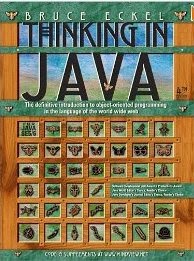1.
Mkyong: Most developers find quick overview of
coding scripts with descriptive examples and images here. It is a
platform to explore various frameworks. Free tools can be downloaded
either for commercial or non-commercial use.
Visit Mkyong
2.
Programmingbydoing: consists of more than 100
articles with hundreds of discussions for the most problematic of
topics, ultimate and best alternative to learn;
Visit programbydoing
3.
Stackoverflow: geared towards universal skills
learning from one another and gets benefited; teaches how to increase
inclusion both internally and in tech community? Once active, you can
access all the questions and answers in multiple communities.
Visit Stackoverflow
4.
HackerRank: to check the potential and to make ready
for face competitive heat with career gains; used by 846 thousand
developers, offers 30 languages to learn from, 4000 day today challenges
to crack and more than 1000 companies that hire coding experts.
Visit Hackerrank
5.
Javacodegeeks: comprehensive reference of tips,
examples or libraries; online, readable documents for java, Programming
skills covering, tutorials, and many free downloadable programming
books:
Visit Javacodegeeks
6.
Simplilearn: focuses on offering training and
certification courses online (virtual), all in one place. Broad
overview, almost all, aspects explored by excellent and experienced
trainers.
Visit Simplilearn
Course Preview for Java provided by Simplilearn is as follows:
i.
Intermediate and Advanced Java Programming
ii.
All-in-one Java Development Suite

7.
Javarevisited.blogspot.in: for any Java Problem,
this blog is the depth knowledge for programming scenarios which you may
not have solved easily; read, learns and share concepts with the
project-based learning approach of Java.
Visit Javarevisited
8.
FunProgramming: experiment and build while you work:
its initiative has unique concept of coding a Java program, helps you
in asking questions and comments on each video you visit. New and older
recorded videos on Java coding can be searched and later:
Visit Funprogramming

9.
Introcs.cs.princeton.edu: completely meant for
beginners who can start from beginning without any prior knowledge. The
resource has enabled a couple of book links:
Visit Introcs.cs.princeton.edu

10.
Sanfoundry: suitable for intensive knowledge on all
areas of Java Programming; more than 100 topics of java are covered
here. It has embarked on a mission to provide free quality content
(10000+ Quizzes & Programs) on C, SAN and other core computer
science topics.
Visit Sanfoundry
11.
Github.com: Powerful collaboration of open source
tools, wide code host on the planet with over 21.8 million repositories.
The repository simplifying team management, to support over 200
programming languages, integration tracking, field test tools etc.
Visit Github
12.
Javalessons: “learn Java and more”; focus on simple
examples to make easy learning for beginners. Tutorials are taught in
Interactive lesson Viewer.
Visit Javalessons

13.
Journaldev: posts are categorized in form of
tutorials; consists of Java collections Framework, interfaces, classes,
algorithms and more tools. The blog’s aim is to have a clear
understanding in Java with examples and project code explanation:
Visit Journaldev
14.
Leetcode: project- based- learning approach;
discussing test cases and examples, access to over 190 questions and
solve them on your own, ensures to give knowledge in about eight
different languages such as C, C++, JavaScript, Java, Python, Ruby and
MySQL.
Visit Leetcode
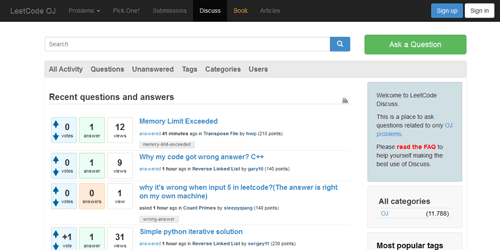
15.
Dzone: earlier known as Javalobby, gives you a
deeper insight of real developer user cases, perfect tools and
scenarios. Preview of various downloadable latest books; depicting
Infographics, 750 IT professionals and developers give result of survey
taken for the articles.
16.
Buggybread: vibrant community across globe; can ask
questions, give advice, and contribute, Creative Data Models, hundreds
of practical working examples, lessons, Groups of related lessons:
Visit Buggybread

17.
Java9s: dedicatedly communicates through video based tutorials; responsible to help register, remove and notify observers.
Visit Java9s
18.
Pvtuts.com: Hub of video tutorials including Java
and other programming languages, comprehensive and detailed in skilled
Programming videos, free to contact in PVT for any query, addition,
improvement or any other explanation.
Visit Pvtuts
19.
Showmedo: can be called as “open source educational
site”. An archive of 10 video-series, 38 videos and 3 learning-paths
with the tag java is a good kick start for any Java beginner or
Professional.
Visit Showmedo
20.
Codingbat: optimized for learning, testing, and training. References, Tutorials and examples are constantly reviewed to avoid errors.
Visit codingbat
Some more high quality blogs which are regularly updated:
1.
Programcreek.com: Introduction of Java, their Design
patterns, Comparison, Algorithms, Java Basics, Advanced Java and lot
more of Questionnaire session are focused.
Visit Programcreek
2.
Java Deep: learning trails provide everything in
java execution; which gives you in depth knowledge of pros and cons of
each and every programming scenario.
Visit Javadeep
3.
Java Tutorial: the vibrant Java community gives a
complete A-Z articles and articles on Java. The blog teaches with best
examples and details of respective topics.
Visit Java Tutorial
4.
Adam bien’s weblog: blogs is designed with
supporting videos, questions and programming Articles. Their Solutions
are simple of ever –changing requirements.
Visit Adam bien’s weblog
5.
Jenkov.com: an online media and software product
company makes its own products and websites. The blog develops concise
and understanding software application from idea and beyond.
Visit Jencov.com
6.
Frankel: good explainer integrates in testing; which is an advantage for geeks.
Visit Frankel
7.
Vladmihalcea: Publishing articles, mapping diagrams, inspects cache strategies.
Visit Vladmihalcea
8.
Marxsoftware: inspired by observations and thoughts in code demonstrations.
Visit Marxsoftware
9.
NoBlogDefFound: Spring framework, algorithms, validates, strategies – in implementations of Java.
Visit NoBlogDefFound
10.
Jooq: alternative to JPA, Code is much better at expressing algorithms than configuration: continue using JDBC and more.
Visit Jooq
11.
Takipi: java blogs with lots of images
representation: tells when and why code breaks in production. Once
installed and connected, detects all events (caught and uncaught
exceptions).
Visit Takipi
12.
Plumbr: combines in and out java: discovers
performance issues and setting automatic problem solutions; Solutions
guidelines: Problem in any code or Problem in JVM Code.
Visit Plumbr
13.
Javapapers: testing and code quality tools: useful java libraries. A wide index of Java tutorials.
Visit Javapapers
14.
RaibleDesigns: open source consulting: develops and enhances web applications: technologies used here are HTML5, CSS, JavaScript and Java.
Visit RaibleDesigns
15.
InfoQ: Covers all topics going around globe in Java
community: Presentations, News, Articles, and books, Research: have
980,000 unique monthly visitors.
Visit InfoQ
16.
Javaworld: Core Java, Enterprise Java, Events, Java
App Dev, Learn Java and Mobile Java: are some of enhanced tabs. One of
Best blog for Java developers, Java architects and Managers to get
professional as well career growth.
Visit Javaworld
17.
JavaEESupport: tutorials include articles on Java, Java EE and more.
Visit JavaEESupport
18.
Jonathangiles: one of best blog on Java. A continuous follower of Java articles around the globe.
Visit Jonathangiles
19.
HowtodoinJava: vocation blog, specific and clear content, Quality targeted.
Visit HowtodoinJava
20.
Jaxenter: collection of everything in Java you want to look for the Articles, Java Videos, News and more.
Visit Jaxenter
Learn Java Programming from Examples:
1.
KodeJava: lot of examples grouped under for better
understanding. The blog asks you to learn from others and donate your
knowledge for others.
Visit KodeJava
2.
Java2novice: Knowledge center: very simple examples for Java beginners; already tested in dev environment.
Visit Java2novice
3.
Programmr: Live Java Exercises, Examples and
Projects: contains e-books, courses, contests. “Challenge Your Friends”
is best tab to check yours and yours friend in-depth knowledge.
Visit Programmr
4.
Java2s: Repository of examples for Basic and Advanced Java, covering all Topics.
Visit Java2s
5.
Java-Examples: Examples are set to increase your
fundamentals towards Java. Functionality becomes easier if you follow
example rather than going theory articles.
Visit Java-Examples
6.
JavaTPoint: Ground of very simple examples for
beginners to very complex coding to the Advance Level. Practice Quiz and
online tests promote you for better learning.
Visit JavaTPoint
7.
JavaCodeGeeks Examples: Dashboard is always hot with latest lessons and Examples: gives you overview and to analyze around the globe.
Visit JavaCodeGeeks Examples
8.
Fluffycat: supports Java Reference through basic, simple examples online. Precise articles carrying many examples are best part.
Visit Fluffycat
9.
Javaranch: consistent examples: better learning is the key here.
Visit Javaranch
10.
Learntosolveit: Motive: Programming tasks: Many Examples. Aims to fast, correct and independent problem solving.
Visit Learntosolveit
11.
Javafaq: huge collection of introductory Java code examples, Free Java E-book ensures performance without assistance.
Visit Javafaq
Bonus Resource: www.reddit.com/r/Javahelp and www.reddit.com/r/learnJava
Java Coding is categorized into ‘controversial' or 'hot’ etc. based on
their level of importance. Questions could very basic, like: “Could I
turn my code into an executable file?” Click on any of them here and
somewhere you'll get a path to your solution.
Best way to learn Java programming:
Including online resources, blogs, and examples in this article make Java Programmers thrives and continues to grow.
Certification in Java Programming gives you a boost in career path for maximum benefits.
If you know any resources like this, you can comment about it, it will add more value to this article.

I have put down highly useful resources that may
come in handy to improve your Java programming skills in one month.
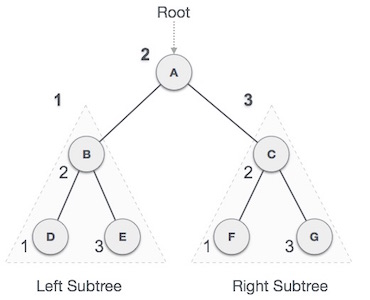 We start from A, and following in-order traversal, we move to its left subtree B. B
is also traversed in-order. The process goes on until all the nodes are
visited. The output of inorder traversal of this tree will be −
We start from A, and following in-order traversal, we move to its left subtree B. B
is also traversed in-order. The process goes on until all the nodes are
visited. The output of inorder traversal of this tree will be −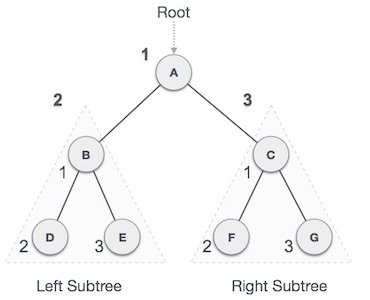 We start from A, and following pre-order traversal, we first visit A itself and then move to its left subtree B. B
is also traversed pre-order. The process goes on until all the nodes
are visited. The output of pre-order traversal of this tree will be −
We start from A, and following pre-order traversal, we first visit A itself and then move to its left subtree B. B
is also traversed pre-order. The process goes on until all the nodes
are visited. The output of pre-order traversal of this tree will be −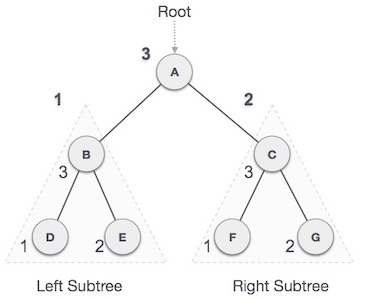 We start from A, and following Post-order traversal, we first visit the left subtree B. B
is also traversed post-order. The process goes on until all the nodes
are visited. The output of post-order traversal of this tree will be −
We start from A, and following Post-order traversal, we first visit the left subtree B. B
is also traversed post-order. The process goes on until all the nodes
are visited. The output of post-order traversal of this tree will be −







